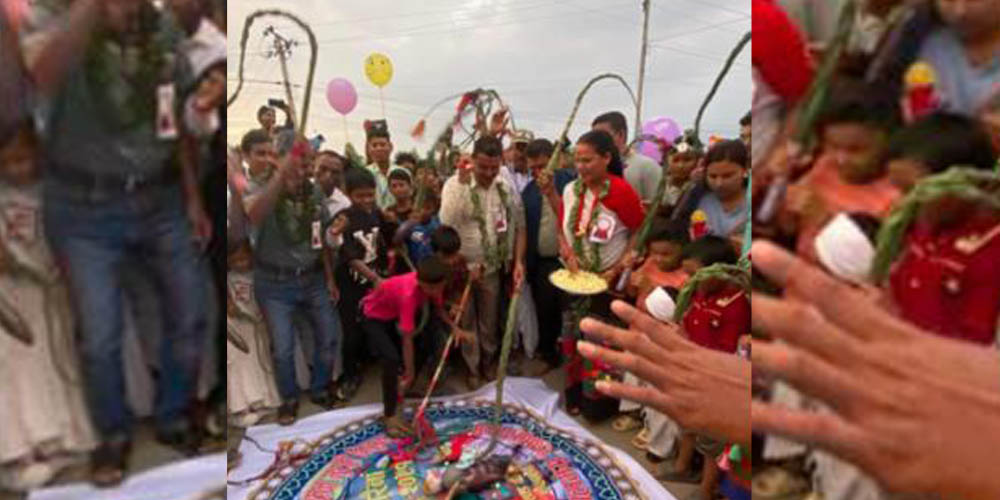- Sunday, 31 August 2025
Gurahi, cultural festival of west Tharu community, observed
Kailali, July 29: Gurahi, a cultural festival of the Tharu community in the western Nepal was, also observed with a great enthusiasm in Kailali today.
The festival is traditionally observed to protect crops from insects and pests, recongising the significance of agriculture in one's life.
During the festival, girls and sisters create a cloth-made doll known as Guriya which is later ritually disposed of in a location far from the home. The disposal ritual is called Asraina.
According to Dil Bahadur Chaudhary, Coordinator of the Tharu Civil Society Kailali, the performance of such rituals are believed to have ward off pests and harmful influences from nursery crops, thereby leading to their growth.
The disposal of the doll is followed by the distribution and consumption of Prasad, a sacred offering made from mixed grains and bhuja (puffed rice), accompanied by traditional singing and dancing. "The celebration of Gurahi is a significant expression of the Tharu community’s cultural richness and diversity," said local cultural activist Kalimaiya (Unnati) Tharu.
The term Gurahi in the Tharu language refers to a dragonfly, known in Nepali as Gainekira (singing insect). This insect plays an important ecological role by feeding on mosquitoes and other harmful bugs, contributing to cleaner surroundings. In recognition of its significance, participants honor it by creating the cloth doll, which is symbolically struck with a stick by male participants, a ritual meant to drive away diseases and negative influences from the community.
Gurahi is also considered a festival for Tharu children, believed to protect them from common seasonal ailments such as eye infections, fever, skin rashes, and vomiting. In this way, the festival is traditionally connected to public well-being, it is said.
Celebrated since ancient times, Gurahi also stands as a symbol of social harmony and friendship. Notably, it coincides with Nag Panchami, a Hindu festival dedicated to the worship of serpents that is being celebrated today this year. (RSS)








-square-thumb.jpg)




-original-thumb.jpg)
